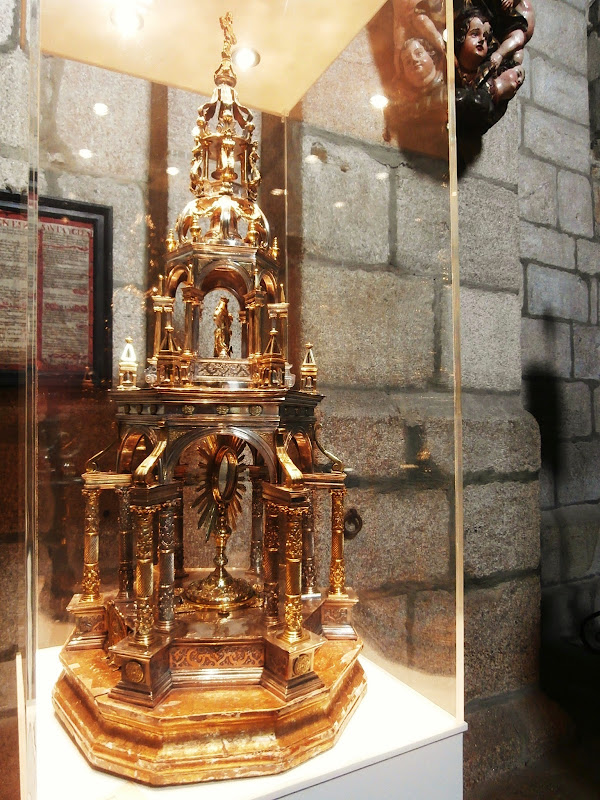2015/05/11
Cathedral of Tui. The Inside. Part 4. Cathedral Museum. Chapel of Santa Catalina (II).
Our visit to the Museum continues.
We can see in the center of the picture in its lower part the reliquary Copón de Coco. It is made of silver and coconut (15th century). There are also chalices of different historical periods.
San Juan (carving and niche are made of polychrome wood, 1756).
Baroque altarpiece.
Silver trays, a writing case made of nickel silver (19th century), a botafumeiro (http://en.wikipedia.org/wiki/Botafumeiro).
These are chasubles and other holy vestments. The complete red three-piece suit highlights. It belonged to Bishop Diego de Avellaneda (16th century, 1518).
This is the Main Altarpiece. It is of Baroque style. We can see saints of the Benedictine Order (San Anselmo, San Benito and San Mauro). The altarpiece is crowned by Santa Catalina de Alejandría with Santa Gertrudis and Santa Teresa de Ávila.
These are remains of the Main Altarpiece made of limestone (1520). It is the statue of Saint Anne, Madonna and Child.
Processional Monstrance made of white and golden silver by silversmiths from Valladolid (1602). Historian Suso Vila has commented that it lacks a floor because some pieces were removed. The chaplains who used to carry it complained about its weight.
This is the statue of the Assumption of Mary. It was located on the Episcopal Chair of the Cathedral Choir (1699). When the Choir was moved to the Main Chapel in 1954 the statue of the Assumption of Mary was moved to the Cathedral Museum.
This is a part of the Romanesque window over la Lamentación de Cristo Muerto that is located as we have seen in the right aisle of the Cathedral.
Baroque altarpiece with a statue of San Benito.
Trays and a lectern made of silver, some crosses of brotherhoods, botafumeiro.
This is the vault of the Chapel of Santa Catalina.
Subscribe to:
Post Comments (Atom)
















No comments:
Post a Comment